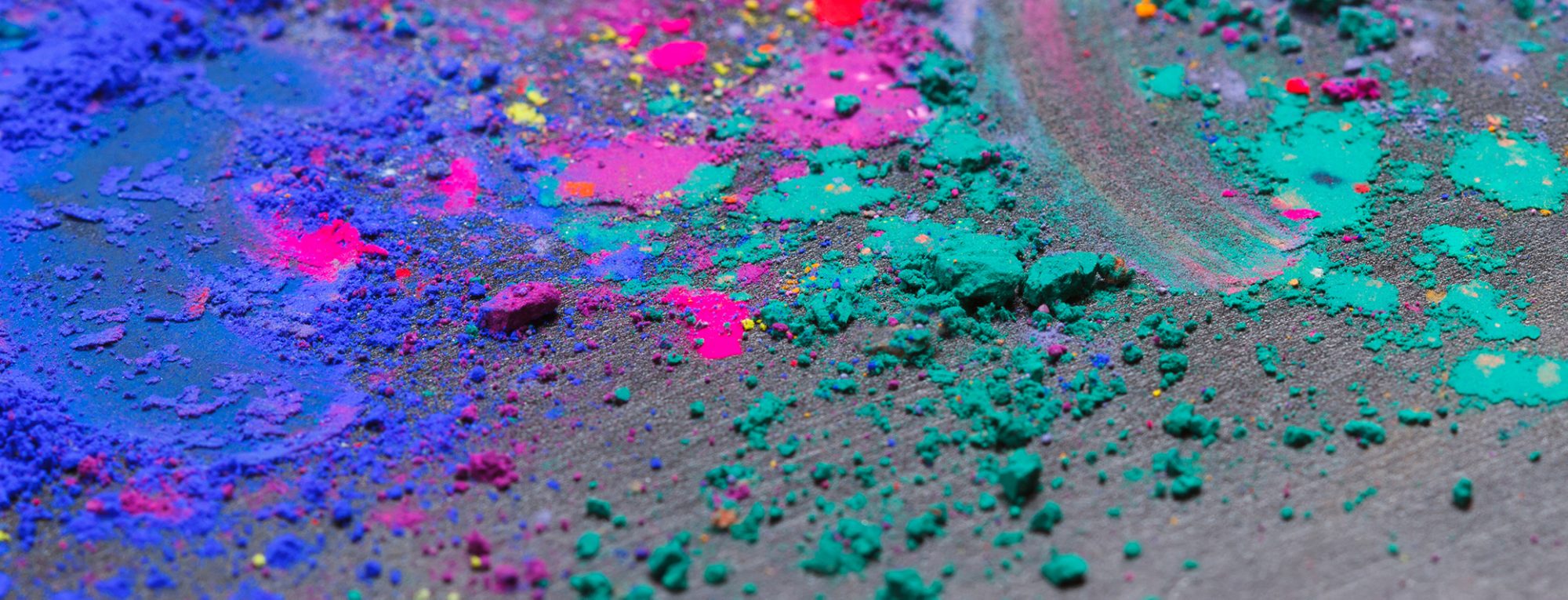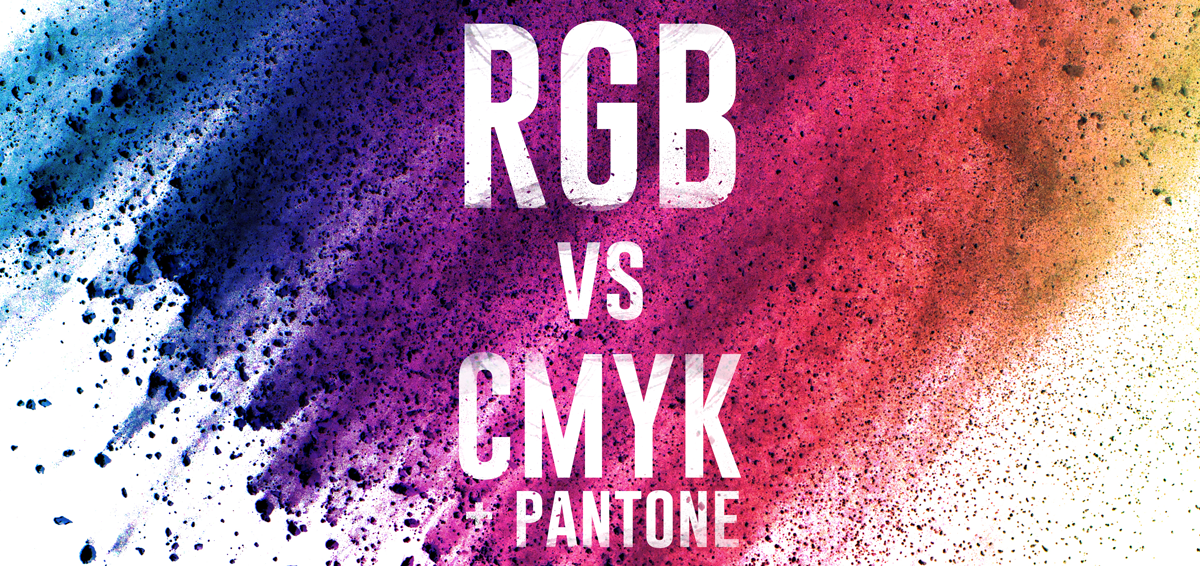There are two main color models used in design. Its important to know which one to use and for what purpose. Lets talk about when and why to use RGB vs CMYK or Pantone.
RGB vs CMYK or Pantone Colors
RGB stands for Red Green Blue and is to be used for anything that is to be displayed on a monitor, TV screen as in websites, videos, online ads, etc. The colors are made up of pixels and used in a color combination of RGB to display an image on screen. RGB is an additive color model which means if all 3 colors are displayed (R, G + B) it will create white.
CMYK stands for Cyan, Magenta, Yellow, Key (Key = Black) and is to be used for anything that is printed with Ink (Magazines, packaging, mailers, coupons, etc.). Most often the process starts with a white sheet of paper and each color is applied individually until the final image is produced. The images is made of tiny dots of CMYK or a variation of those colors. The larger the dot the more that specific color is represented in the print. The more colors that over lap, the darker that section of the image will be. CMYK is a subtractive color model which means it creates white by subtracting colors.
Not confuse the process, but in addition to printing with CMYK inks you can also print with Pantone inks. Pantone inks are specific color inks. Using Pantone inks while printing will achieve a more accurate color if you are looking for a specific color while CMYK cannot. Pantone colors also come in metallic inks. If you are working with Pantone colors you will want to purchase a Pantone Color Swatches in both Coated and Uncoated so you can accurately choose the correct color for your design.
When setting up files for Print, be sure to set up the file in CMYK and do not convert later. Also, remember you are viewing your CMYK print design on an RGB screen so colors will most likely not print as they appear on the screen.
To Further understand CMYK vs Pantone you will need to know what Printing Method you will be in order to set up the file correctly.
Understanding Printing Methods for CMYK + Pantone
Digital printing is printed only using CMYK Inks with either an inject or laser printer and is generally used for brochures, coupons, marketing materials, etc. Ink is a liquid form of pigmentation, while toner is a fine powder. In most cases if you are using a larger digital print house they are using laser printers to print your files. Digital printers have come along way over the years and some have expanded into printing packaging for retail products, but digital printing packaging is extremely different then offset printing. Sheet sizes are usually 8.5″ x 11″, 11″ x 17″, 19″ x 27″ that range from a thin copy paper thickness up to 18 point SBS board.
Offset Printing uses etched metal plates or rubber blankets that apply ink onto a sheet of paper. The setup for offset printing is generally significantly more time consuming and expensive than digital printing. The metal plates—one plate per each color (CMYK and/or Pantone colors) is placed into the machines color bay, specific for that color, by a pressmen— then each images is etched, and ink is applied to the rollers that then transfers the ink onto the paper. From there, the press needs to be run for a few minutes on waste sheets of paper until the plates are properly inked. After the printing process has completed, the sheets need to be diecut. (and then glued, if your project requires it). The offset manufacturing process can take up to 2-4 weeks to complete depending on the complexity of the project. Sheet sizes are usually 28″ x 40″ or 28″ x 50″ that range from 10 pt to 28 pt and all different types of substrates.
In digital printing it’s the number of copies that counts; Offset it’s the number of sheets. Offset only makes sense if making a few thousand copies of the same sheets with the same artwork. So for example, if you’re printing 250 copies of a catalog that is 100 pages long, you’re printing 25,000 pages but only 250 copies. This would qualify as a job best suited for Digital Printing. If you were to print this offset it wouldn’t make sense because each sheet would require its own plate to be made. Folding carton retail product packaging is best suited for offset printing because in most cases you would be printing multiple SKUs with the same artwork on the same sheet. This would be more cost effective. However, your artwork must go through a proofing process to insure there are no errors. Once plates are made and boxes have hit the press, an error in artwork can set you back a significant amount of money along with delay in getting products to the shelf.
Setting up files specifically for Packaging
Totally off topic, but we feel as though it should be mentioned here. When sending files to a printer for folding carton manufacturing be sure to:
1. Use Illustrator to create the artwork. Do NOT use In Design for packaging. In Design is used for catalogs and magazine spreads.
2. Create layers within your files. We generally use Background, Artwork, and Dieline. You may have more, but this should be the minimum.
3. Check your color separations and be sure the colors that are used in the file are the colors you intend to print. NOTE: Your folding carton manufacturer will need to know how many colors you are using in your artwork files before they can provide you with a quote.
4. Package your files. Include all linked images and fonts. We will also include a Low Res PDF for viewing purposes, and an AI file with fonts Outlined.
Choosing the right designer for the project
Working with a designer who has experience in these printing methods is crucial to sticking with your project timelines and ultimately get your product on the shelf. Packaging can be challenging if you do not fully understand the file set up process. Not only can Paper Roo Package Design and Branding creatively develop your brand and your product, we also understand the Digital and Offset Printing Methods and have worked with Folding Carton Manufacturers throughout the United States for many years. Our hands on approach, working with clients and manufacturers, has allowed us to be unique in the industry and produce the best results for our customers.



